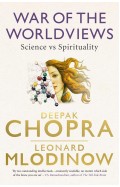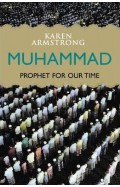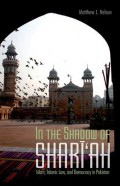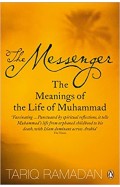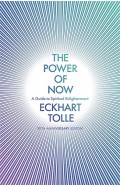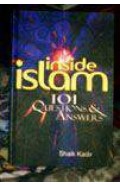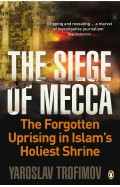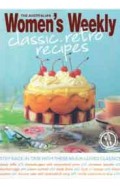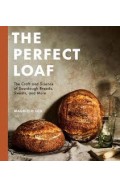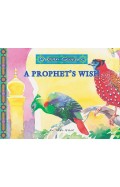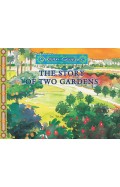What is Sufism?
By: Martin Lings
-
Rs 540.00
- Rs 600.00
- 10%
You save Rs 60.00.
Due to constant currency fluctuation, prices are subject to change with or without notice.
this is a clear, thorough and reliable introduction to Sufism. What do the Sufis believe? What do they aim at? What do they do? Unlike other writers on the subject, Martin Lings treats all three questions with equal justice. He is thus able to give a wealth of answers to the main question- What is Sufism? Each answer being from a different angle but all going to the root of the matter. Martin Lings knows his subject thoroughly and intimately and it has always been a characteristic of his writings that he goes straight to the heart of his subject. In his careful explanation of what Sufism is and, just as important, what it is neot,•he brings to bear both a profundity of understanding rare among modern writers, and also an uncompromising insistence on many aspects of Sufism which are usually brushed aside. The book plays a double role: it is both an excellent “introductory” work and a direct reflection of certain states from which a real answer might be given to the question. It has the taste of tasaw2vuf to such an extent that to read it is like an anticipatory participation in the very subject matter itself
this is a clear, thorough and reliable introduction to Sufism. What do the Sufis believe? What do they aim at? What do they do? Unlike other writers on the subject, Martin Lings treats all three questions with equal justice. He is thus able to give a wealth of answers to the main question- What is Sufism? Each answer being from a different angle but all going to the root of the matter. Martin Lings knows his subject thoroughly and intimately and it has always been a characteristic of his writings that he goes straight to the heart of his subject. In his careful explanation of what Sufism is and, just as important, what it is neot,•he brings to bear both a profundity of understanding rare among modern writers, and also an uncompromising insistence on many aspects of Sufism which are usually brushed aside. The book plays a double role: it is both an excellent “introductory” work and a direct reflection of certain states from which a real answer might be given to the question. It has the taste of tasaw2vuf to such an extent that to read it is like an anticipatory participation in the very subject matter itself
A Return to the Spirit Questions and Answers -
By: Martin Lings
Rs 592.00 Rs 740.00 Ex Tax :Rs 592.00
Muhammad PBUH is Life Based on the Earliest Sources -
By: Martin Lings
Rs 960.00 Rs 1,200.00 Ex Tax :Rs 960.00
The Eleventh Hour the Spiritual Crisis of the Modern World in the Light of Tradition and Prophecy
By: Martin Lings
Rs 480.00 Rs 600.00 Ex Tax :Rs 480.00
Symbol and Archetype A Study of the Meaning of Existence
By: Martin Lings
Rs 585.00 Rs 650.00 Ex Tax :Rs 585.00
The Holy Quran Translations Of Selected Verses
By: Martin Lings
Rs 3,676.00 Rs 4,595.00 Ex Tax :Rs 3,676.00
The Holy Qur'an: Translations of Selected Verses
By: Martin Lings
Rs 624.00 Rs 780.00 Ex Tax :Rs 624.00
Zubin Mehta: A Musical Journey (An Authorized Biography)
By: VOID - Bakhtiar K. Dadabhoy
Rs 892.50 Rs 1,050.00 Ex Tax :Rs 892.50
Hum Kaha Kay Sachay Thay (Large) - (HB) (Urdu)
By: Umera Ahmad
Rs 510.00 Rs 600.00 Ex Tax :Rs 510.00
The Quest For Meaning: Developing A Philosophy Of Pluralism
By: Tariq Ramadan
Rs 1,185.75 Rs 1,395.00 Ex Tax :Rs 1,185.75
War of the Worldviews: Science vs Spirituality
By: Dr Deepak Chopra
Rs 797.50 Rs 1,595.00 Ex Tax :Rs 797.50
In the Shadow of Shari'ah: Islam, Islamic Law and Democracy in Pakistan
By: Matthew J Nelson
Rs 2,347.50 Rs 4,695.00 Ex Tax :Rs 2,347.50
The Messenger: The Meanings of the Life of Muhammad
By: Tariq Ramadan
Rs 2,236.00 Rs 2,795.00 Ex Tax :Rs 2,236.00
Hum Kaha Kay Sachay Thay (Large) - (HB) (Urdu)
By: Umera Ahmad
Rs 510.00 Rs 600.00 Ex Tax :Rs 510.00
Classic Retro Recipes: The Australian Womens Weekly Australian Womens Weekly Essential
By: Octopus
Rs 590.75 Rs 695.00 Ex Tax :Rs 590.75
Want - Sexual Fantasies by Anonymous
By: Gillian Anderson
Rs 3,415.50 Rs 3,795.00 Ex Tax :Rs 3,415.50
Studies in Hadith Methodology and Literature
By: M.Mustafa Azmi
Rs 1,020.00 Rs 1,200.00 Ex Tax :Rs 1,020.00
The Perfect Loaf - The Craft and Science of Sourdough Breads, Sweets, and More
By: Maurizio Leo
Rs 8,095.50 Rs 8,995.00 Ex Tax :Rs 8,095.50
Zubin Mehta: A Musical Journey (An Authorized Biography)
By: VOID - Bakhtiar K. Dadabhoy
Rs 892.50 Rs 1,050.00 Ex Tax :Rs 892.50
A Return to the Spirit Questions and Answers -
By: Martin Lings
Rs 592.00 Rs 740.00 Ex Tax :Rs 592.00
Muhammad PBUH is Life Based on the Earliest Sources -
By: Martin Lings
Rs 960.00 Rs 1,200.00 Ex Tax :Rs 960.00
The Eleventh Hour the Spiritual Crisis of the Modern World in the Light of Tradition and Prophecy
By: Martin Lings
Rs 480.00 Rs 600.00 Ex Tax :Rs 480.00
Symbol and Archetype A Study of the Meaning of Existence
By: Martin Lings
Rs 585.00 Rs 650.00 Ex Tax :Rs 585.00
The Holy Quran Translations Of Selected Verses
By: Martin Lings
Rs 3,676.00 Rs 4,595.00 Ex Tax :Rs 3,676.00
The Holy Qur'an: Translations of Selected Verses
By: Martin Lings
Rs 624.00 Rs 780.00 Ex Tax :Rs 624.00
Hum Kaha Kay Sachay Thay (Large) - (HB) (Urdu)
By: Umera Ahmad
Rs 510.00 Rs 600.00 Ex Tax :Rs 510.00












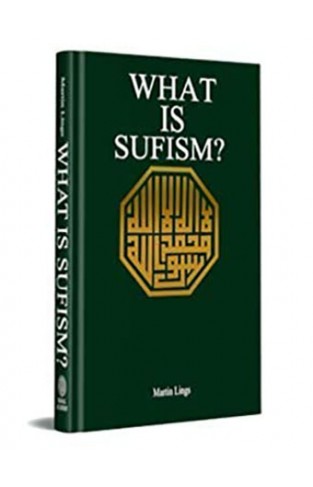







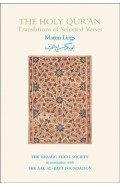

-120x187.jpg?q6)





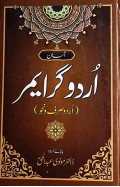
-(HB)-(Urdu)-120x187.jpg?q6)
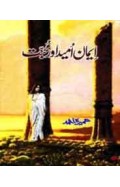
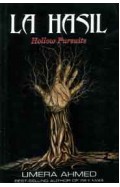
-120x187.jpg?q6)

